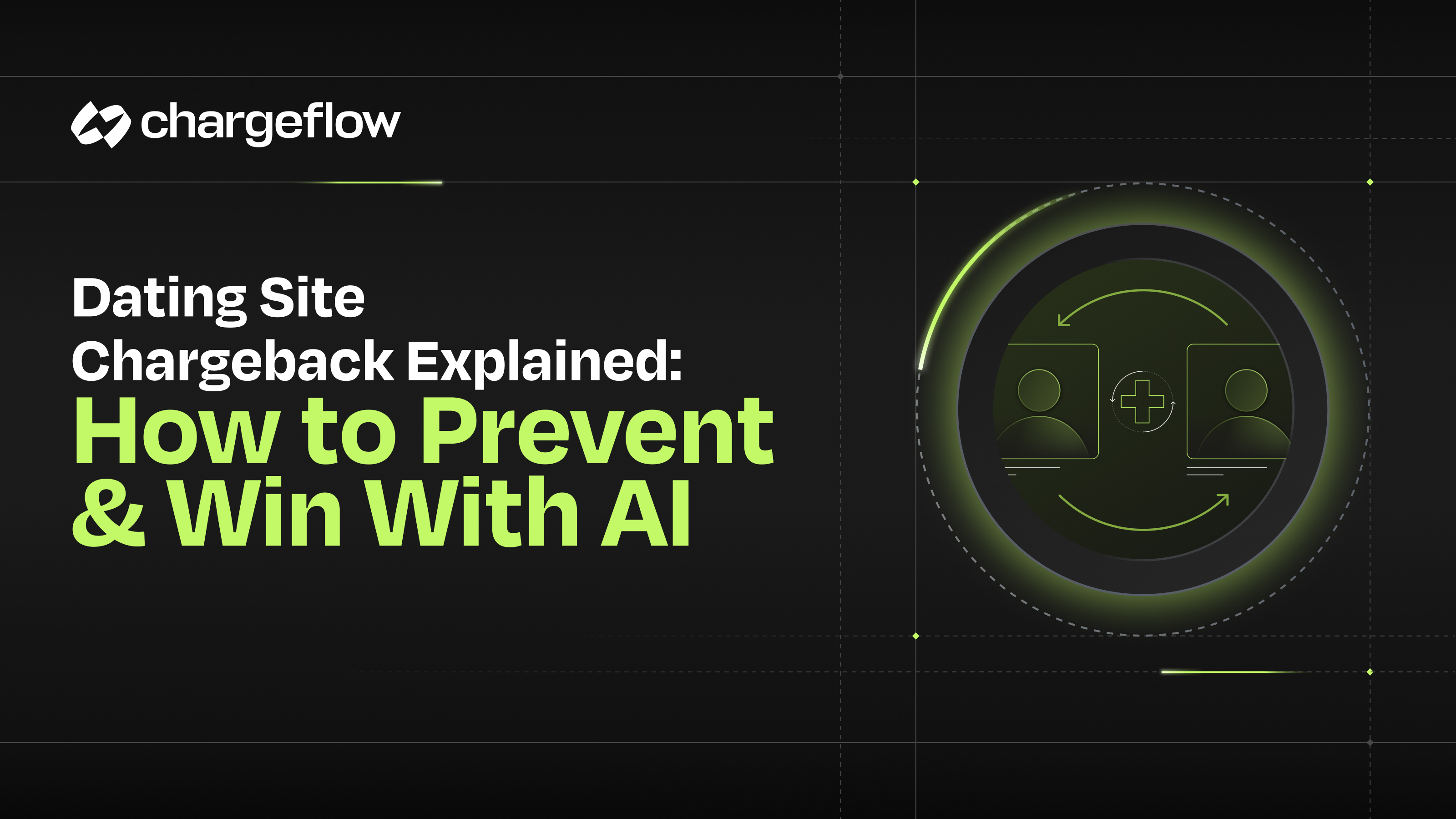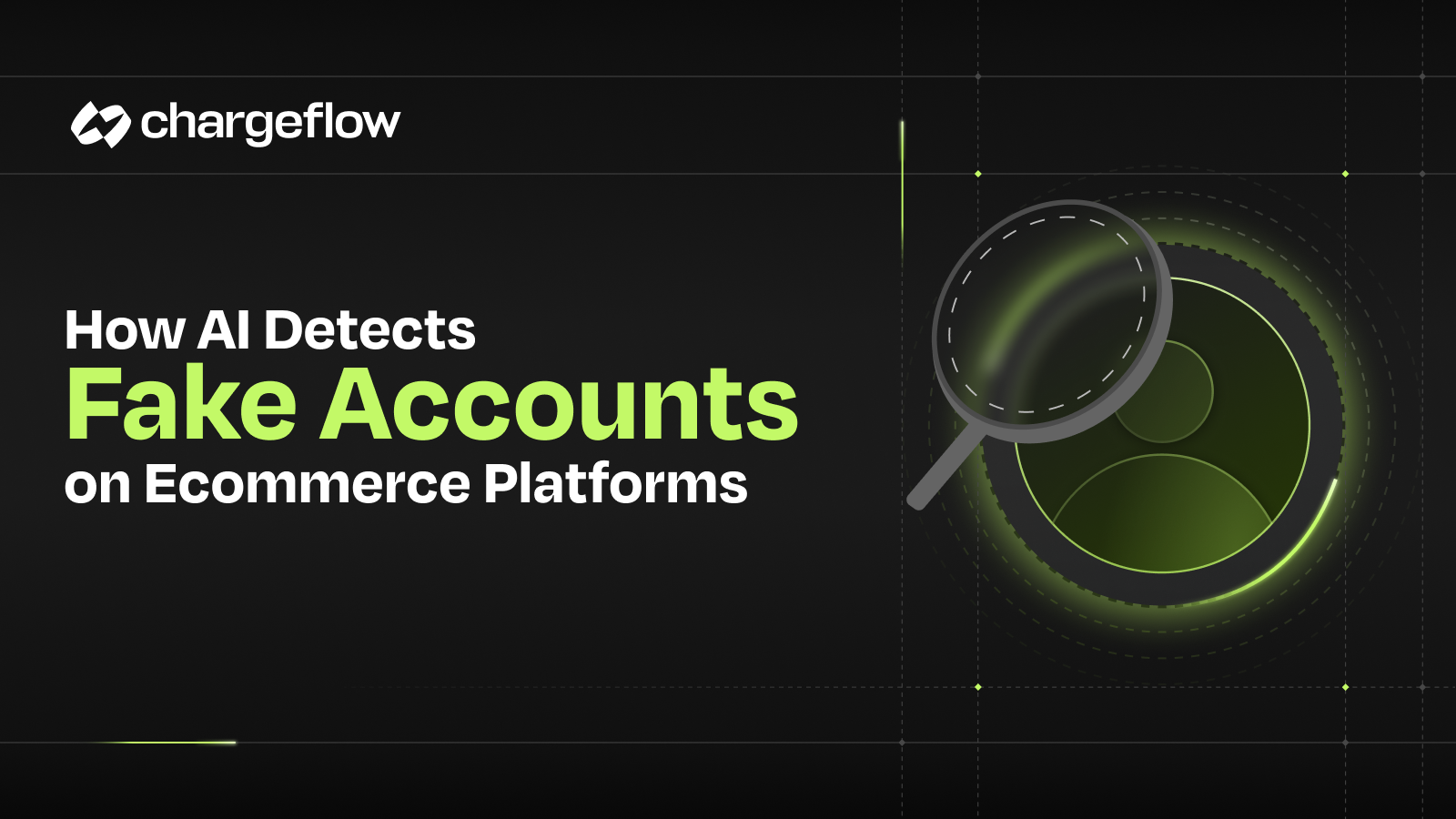Stripe vs Adyen: The Most Reliable Comparison You'll See Online

Chargebacks?
No longer your problem.
Recover 4x more chargebacks and prevent up to 90% of incoming ones, powered by AI and a global network of 15,000 merchants.
This guide seeks to help eCommerce businesses, retailers, and platform owners looking for insights on Stripe vs Adyen determine which platform is best.
The history of payments from 1960 to 2000 reveals a distinct pattern. A sharp shift from cash-based transactions to card-based and electronic payment systems began in 1990. This dramatic transition is the foundation for the ongoing eCommerce boom.
Today, brands like Stripe and Adyen lead the charge in streamlining payment processing for quicker and more efficient digital commerce. Stripe and Adyen are crucial enablers of the ongoing proliferation of online commerce. They provide frameworks for efficient, secure, and convenient online transactions. But how do they compare?
This guide seeks to help eCommerce businesses, retailers, and platform owners looking for insights on Stripe vs Adyen determine which platform best aligns with their business model. We'll explore the features, advantages, pricing, and every other essential detail you need to make an informed choice of payment processing partner.
Stripe Features and Overview at a Glance

As highlighted in our Stripe vs Shopify Payments guide, Stripe offers robust APIs that are easy to integrate and customize. Stripe prides itself on being a complete payment platform for businesses. It provides everything you need to collect payments online or offline. The platform leverages machine learning to maximize conversion rates and minimize fraud.
The API-first approach to payments and obsessive focus on customer experience positions Stripe as a developer-centric company. Many merchants consider it the rebel company on a mission to "right the wrongs" in payments.
Stripe facilitates card-present payment through POS terminals and offers cash advances to SMEs struggling with early cash flow. Whether you want to adopt new business models, attract customers with a simplified checkout system, or increase revenue, Stripe answers such needs with their complete payments platform. Stripe Billing simplifies subscriptions, while Stripe Terminal unifies online and in-person sales seamlessly.
Stripe currently commands a 21% market share of the global payments industry. Recent Stripe statistics indicate the payment giant is one of the most valuable private fintech companies worldwide. It has exceeded $1 trillion in total payment volume. The Stripe system reportedly offers a 99.99% uptime, which is exceptional.
Stripe’s Key Features
Stripe's feature-rich payment suite simplifies online transactions – from sign-up to scale-up. From managing subscriptions, optimizing revenue, and preventing fraud, to expanding globally, Stripe caters to businesses at all stages. You can integrate their service into more than 450 platforms and extensions. Notable Stripe features include the following:
- Seamless integration options (APIs, SDKs).
- Payment acceptance and processing offline or through customizable checkout on mobile, laptop, and desktop.
- Support for 100 payment methods like cards, bank debits, bank redirects, bank transfers, BNPL, real-time payments, vouchers, and wallets.
- Ability to build feature-complete payment products and localize experiences across 118 countries.
- Support for 135+ local and international currencies.
- Custom revenue and financial automation tools, such as Sigma, Atlas, and Stripe Billing for reporting, incorporation, revenue recognition, tax and VAT automation, invoicing, and billing.
- Customizable embeddable components for seamless checkout on desktop, mobile, or tablet devices.
- Data protection, fraud prevention, and regulatory compliance for favorable business operations.
Stripe is suitable for all businesses, online or offline, across various niches. With Stripe, you can accept payments by creating checkout pages and payment links or sending invoices directly to customers via email.
Stripe Pricing
Stripe does not charge subscription fees for payment processing. You pay a commission for every transaction processed.
- The payment processing fees are:
- 2.9% of the transaction and 30 cents for domestic cards.
- 4.4% and 30 cents for international cards.
- 2.7% and 5 cents for offline transactions.
- 3.4% and 30 cents for manually keyed transactions.
- Stripe Radar for Fraud Teams charges 2 cents for each screened transaction.
- Monthly POS software costs are:
- $0 for standard Stripe Connect, and
- $2 per account for Stripe Express (for marketplaces) or Stripe Custom (the customizable white-label option).
- Hardware costs are as follows:
- $59 for Stripe Reader M2;
- $249 for BBPOS;
- WisePOS eCard reader; and
- $349 for Stripe Reader S700.
Stripe offers custom pricing options for enterprise clients. Stripe also charges a chargeback fee of $15.
Stripe’s Advantages
Millions of companies of all sizes use Stripe to accept payments, embed financial services, create custom revenue models, and enhance profitability. Unique Stripe advantages include the following:
- Streamlined workflow for flexible integration.
- Developer-friendly tools with extensive documentation.
- PCI DSS compliant with robust customer authentication requirements.
- Robust tools for managing recurring payments and subscriptions.
- Reputable moderate pricing strategy and customer service.
- Global reach and currency support.
Stripe’s Disadvantages
Every platform has downsides you should look into for informed decision-making. For Stripe, the reported downsides include:
- Set up may require some technical expertise.
- Strict fraud and chargeback policy may not favor all merchants.
- Limited in-person payment with Stripe terminal.
Adyen Features and Overview at a Glance

Adyen is a cutting-edge payment service provider designed for businesses that demand efficiency and scalability. Adyen was founded in 2006 and has a global head office in Amsterdam.
The end-to-end payment processor simplifies transactions for enterprises and medium-sized companies. It ensures a seamless payment experience for vendors and their users.
Adyen simplifies payment infrastructure by offering a unified solution across multiple markets. Its multi-channel payment processing allows businesses to accept, process, and settle payments online and offline. Their global footprint helps companies reach customers worldwide.
Adyen also provides essential data insights, enabling businesses to make informed decisions that enhance customer experiences. While Adyen does not command the attention that Stripe currently does in market share, Adyen still warehouses big-name brands like eBay (which jumped ship from PayPal in 2021 after using the platform for over a decade). Other notable customers include Facebook, Netflix, Etsy, Uber, and Spotify to name a few.
Adyen’s Key Features
Adyen simplifies payment management with a single contract, optimizing performance through direct connections to global and local card networks for better authorization rates and lower fees. Notable Adyen features include the following:
- A robust payment gateway to facilitate online/offline payment processing.
- Simplified payment integration into mobile apps through SDKs.
- Adyen API facilitates payment processing integration into websites or websites.
- Multiple currency support and dynamic currency conversion allow customers to pay in their local currencies.
- Supports subscription businesses and recurring payments.
- Tokenization enhances security by replacing sensitive data with unique identifiers.
- Fast and seamless customer authentication experience completed behind the scenes or with simple customer inputs.
Adyen provides solutions for physical retail locations, including payment terminals and POS systems for in-store transactions. Its all-in-one payments optimization toolkit maximizes every transaction throughout the payment cycle.
Adyen’s Pricing
Adyen says it charges a fixed processing fee and a fee determined by the payment method. Other Adyen products besides payment methods, are priced separately.
- Payment processing fees are Interchange plus:
- 0.60% and 13 cents per transaction for Visa and Mastercard.
- 3.3% and 23 cents for Amex cards.
- 3%-12% and 13 cents for other payment methods, depending on the transaction type.
- 40 cents per transaction for ACH direct payments.
- Adyen has not disclosed its card reader prices publicly but charges no monthly fee for POS software.
Adyen’s chargeback fee is not entirely straightforward, with costs ranging between $5–100.
Adyen’s Advantages
Adyen enables your customers to pay, however they prefer—online, in-app, or offline. You partner with one provider to accept, process, and settle all payments while unifying your payment data across channels.
- Supports multiple payment methods and currencies.
- All-in-one platform for online, mobile, and offline payments.
- Analytics to enhance transactions and track customer behavior.
- API integration enables customization and scalability.
- Adyen offers risk management tools that help merchants limit fraudulent transactions.
Adyen’s Disadvantages
The reported Adyen downsides include the following:
- Users with limited technical skills might find the initial setup and integration complex.
- Compared to Stripe, Adyen’s customer support systems lag.
- Adyen's transparent interchange-plus pricing is cost-effective but quite complex compared to Stripe's flat-rate model. Transaction costs vary by location and payment method, and the monthly invoice minimum may not suit low-volume merchants.
Stripe vs Adyen: Key Differences to Note
Stripe and Adyen offer similar services that make payment processing effortless for merchants. Both payment service providers support vast payment methods, have global reach, and have robust, developer-friendly APIs. Stripe and Adyen also facilitate online and offline payments and are safe to use.
However, differences abound, which might make you prefer one service provider to the other. Having outlined the essential aspects of both companies, let’s draw a sharp Stripe vs Adyen observation with key differences to note.
Integration and Developer Experience
Stripe's onboarding process is reportedly more straightforward than Adyen's. Stripe offers pre-built, feature-complete checkout pages for non-developer founders and customizable features for tech-savvy users.
While Adyen has similar functionality, merchants have equally observed that onboarding Adyen can be cumbersome. They require test accounts and approval discussions with sales reps. Even though such a meticulous approach is not a problem for large enterprises, it could be challenging for small businesses.
Regarding documentation, Stripe’s library is more extensive than Adyen's. You can browse their literature by product so developers can quickly find what they need.

Pricing and Fees
Adyen's "interchange-plus" pricing strategy makes it more suitable for large enterprises, while Stripe suits SMBs more due to its flat rate and transparent pricing and fee structures.

Suitability for Different Businesses
Stripe is great for tech-savvy companies needing flexible integration, especially in eCommerce. Adyen is best suited for large enterprises desiring an omnichannel solution, with diverse payment methods for international operations.
Customer Support
Stripe excels in customer support than Adyen. Stripe’s extensive user education content, including radar resource center, ebooks, videos, and podcast recordings makes it a preferred payment service provider for eCommerce.
Stripe vs Adyen: The Final Verdict
By now, you understand how Stripe and Adyen compare to each other. You know about their features, benefits, drawbacks, and significant differences. But when do you choose Stripe or Adyen? Here's our verdict:
When to Choose Stripe
- Startup or Small Business Owner: Stripe is quick to set up with a developer-friendly API. The company has no entry barriers and charges zero monthly fees, making it suitable for businesses operating on limited budgets.
- eCommerce Business Owner: Stripe offers extensive online payment features and essential tools for subscription billing and invoicing.
- Marketplace Business: Stripe Connect helps entities enabling transactions between merchants and customers manage multi-party payments and splits.
- Recurring Billing Business: Works perfectly well for subscription billing, including trial periods and automatic renewals.
When to Choose Adyen
- Large Enterprise: Designed for high-volume merchants with complex payment needs across multiple regions and currencies.
- Businesses With International Operations: While Stripe operates internationally through partners and direct market access, Adyen has distinguished itself for handling international payments.
- Omnichannel Retailers: All-in-one payment solution for integrating online, in-store and mobile payments.
- Travel and Hospitality: Adyen has extensively tailored solutions for industries (like travel and hospitality) with unique payment requirements, such as dynamic pricing and pre-authorizations.
How Chargeflow Enhances Secure Digital Payments
Chargeflow is the automated chargeback prevention and recovery solution for eCommerce. Chargeflow uses machine learning and data analysis to identify and categorize chargebacks, stopping friendly fraud before they happen. The platform provides unbelievably extensive insights and reporting tools to track chargeback trends. You have absolute control in making the best decision for your business. Regarding dispute recoverability, Chargeflow outpaces counterparts by far, as illustrated in this case study published by Stripe!
If you wish to recover false and fraudulent chargebacks without lifting a finger, then Chargeflow is your best bet. You will quickly improve your dispute win rate, enhance your user experience, and buy back more time to focus on core operations. The clean user experience and success-based pricing are a bonus, making Chargeflow a valuable resource for businesses looking to enhance chargeback management processes.

Chargebacks?
No longer your problem.
Recover 4x more chargebacks and prevent up to 90% of incoming ones, powered by AI and a global network of 15,000 merchants.






























.png)








